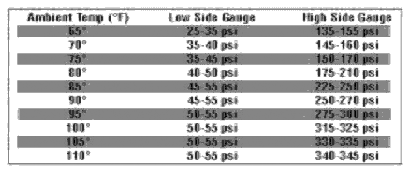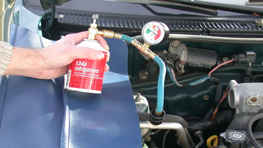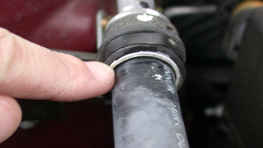Problems with your car's A/C system can range from the simple to the complex, but there are some basic checks you can make. This will help you decide whether you're dealing with something you're comfortable tackling, or if it's time to seek the help and guidance of a skilled service technician.
Before you start digging for what's wrong, always take a few minutes to make sure you're safe when working with the A/C system and when working underneath the hood in general. Always wear safety glasses as refrigerant can harm your eyes if it comes in contact with them or other parts of your body. It's also wise to wear rubber gloves to prevent refrigerant oil or other chemicals from coming in contact with your skin. Finally, do not wear any loose clothing that may become tangled with moving parts and remove jewelry like watches and so forth for the same reason.
If your A/C system doesn't blow cold air, start with these basic checks. First, make sure you have the dash controls set to the right mode and observe the front of the A/C compressor closely. You should see the pulley turning as the belt drives it. A loud squealing noise, accompanied by a burnt rubber smell, usually means that the compressor has seized and that your A/C system needs the help of a professional technician.
If the pulley turns normally, you should also see the compressor hub (located outward from the pulley) turning with the pulley. If not, the system may be low on refrigerant and a system pressure switch may have turned off the compressor to prevent it from damage (a low refrigerant charge reduces the flow of oil in the system and may cause damage to the compressor if left operating this way). Charging the system with some refrigerant should help make the compressor run again, but first evaluate your retrofit options and also see the information about "topping off" in this section.

Click here for a chart explaining how to interpret pressure readings.
Following the directions exactly of the charging kit you're using, connect to the low-side fitting (Warning: Never charge on the high-side of the system because of the high pressures). If you have any doubt about which service fitting is which, the low-side fitting on R-134a systems is the smaller of the two fittings (13 mm outside diameter). If you're still unsure, check a reliable source of service information.
Add refrigerant, with the A/C controls set to max or defrost. If the starting pressure on the charging gauge is more than 65 psi, try adding one-half can of refrigerant to make the compressor engage. If it won't engage, then there may be electrical or mechanical problems with the compressor control circuit or with the compressor itself.

If the compressor does engages and the pressure exceeds 65 psi, the system is either overcharged with refrigerant or it needs other repairs.
It's important to note that on some cars, it's normal for the A/C compressor clutch to turn on and off during system operation. These types of cycling-clutch systems turn the compressor clutch on and off to regulate the flow of refrigerant into the evaporator. Since theses systems use a fixed orifice tube, it can't regulate refrigerant flow on its own. You can tell this type of system by a periodic clicking at the compressor clutch, as it turns on and off. Frequent clicking on and off of the compressor clutch, however, usually indicates a system that is low on refrigerant charge.

Having to add refrigerant regularly is not only inconvenient and costly, it can also jeopardize the long-term health of your car's A/C system. So, it's in your best interest to correct any leaks in the system. Often times, leaks leave telltale signs of refrigerant oil at hose connections and fittings. You can also locate some leaks yourself using an ultraviolet detection additive and then observing where the dye comes out. Follow the directions that come with the product exactly to ensure the best results. For extremely difficult leaks, it may be best to consult a professional service technician who is skilled in the use of an electronic leak detector.

